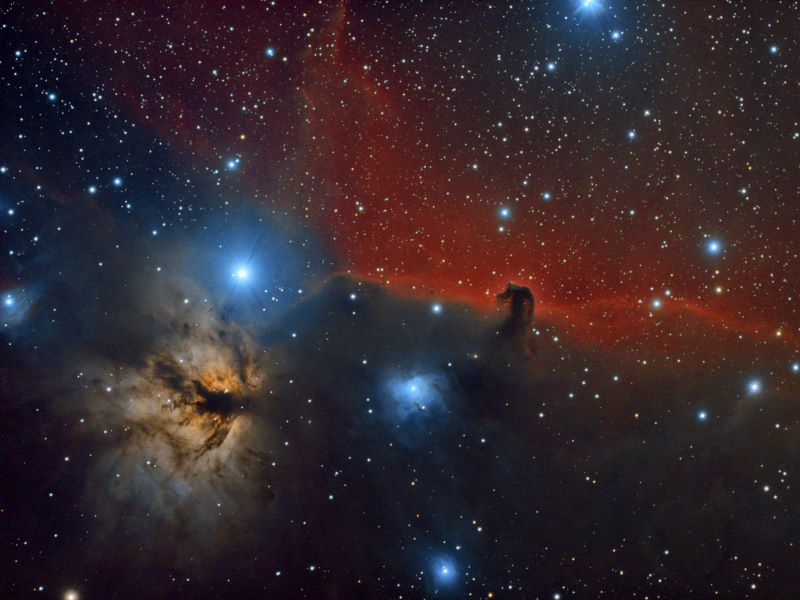Horsehead & Flame Nebulae
![]()
Image information:
| Date: | 01/08/2022 |
| Equipment: | Moravian C1+ 12000A camera through APM/LZOS 105/650 APO telescope with IDAS HEUIB-II filter on Losmandy GM8 mount. The telescope was working at f4.9 using TS 2" 0.79x corrector / reducer. |
| Image type: | OSC |
| Exposure time: | 80X180s, gain 40. |
| Comment: |
![]()
Object information:
|
Object designations: |
|
|
Object type: |
|
|
Object size: |
|
| Constellation: | Orion |
|
Comment: |
Flame Nebula (NGC2024) is an emission nebula in Orion whose atoms are ionized and caused to glow by source hidden from our sight by dark lane of absorbing interstellar dust. The Flame nebula also partially reflects the light of Alnitak (Zeta Orionis), eastern-most star in Orion's belt. Combination of emission and reflection causes the unusual nebula color. The distance to the Flame nebula is some 900 ly and its diameter is 30 ly. Horsehead Nebula (B33) is an opaque dust cloud which lies in front of red emission nebula IC434. IC434 glows because of ionization caused by nearby star Sigma Orionis. Horsehead Nebula is prominent object on photographs, but very difficult to see visually. B33 and IC434 are part of larger Orion gas and dust cloud. The distance of B33 is 1500 ly and its diameter 3.5 ly. A couple of blue reflection nebulae is also visible in the area: NGC 2032 and IC 435. They glow by reflecting the light of stars in their center. They are a part of the came cloud of gas and dust as B33. |
![]()
Related images:
|
List of related images: |
Horsehead & Flame Nebulae, LRGB, ST2000XM through WO ZS105ED telescope |
![]()
